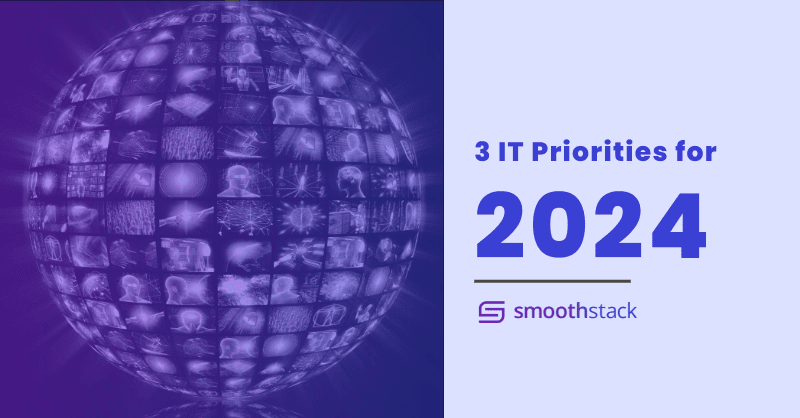3 IT Priorities for 2024: ServiceNow + Smoothstack

In 2024, spending on digital transformation is projected to reach $2.5 trillion, according to Statista. What exactly are businesses hoping to achieve with that investment?
ServiceNow’s Technology Excellence Handbook covers digital transformation in a practical sense. It looks at IT’s business priorities and objectives, and offers real-world examples of how it’s customers have utilized ServiceNow consultancy solutions to achieve them.
The eBook examines the IT organization’s four main business imperatives: automating and optimizing service operations, accelerating software transformation, transforming security operations, and reducing software, hardware, and cloud costs. What’s unique is that it does this in the context of three strategic needs that influence how businesses move forward with these priorities.
-
- Build a modern connected foundation and reinvest.
Yes, there’s such a thing as having too much technology. For decades, companies have added tool after tool across the organization, often in silos from one department to the next. What they’ve been left with is something resembling a patchwork quilt of solutions that aren’t integrated, optimized, or delivering as much value as they should or once were.
We’ve reached an inflection point when it comes to our systems. The old adage “what got you here won’t get you there” can and should be applied to the old way of buying software.
In our modern digital world driven by the unlimited possibility of AI, IT leaders must ensure they have a strong foundation that can withstand whatever comes next. How are you planning to strategically leveraging what you’ve already invested in, and scale accordingly?
-
- Put people first by creating the best experiences.
In our digital-first world, customers expect intuitive, frictionless experiences. What shouldn’t (but often does) happen as a result is an unsustainable workload for IT teams.
Being people first means both customers and employees. Many of the top employers have come to realize this already. Virgin Group CEO Richard Branson famously said “Employees come first. If you take care of your employees, they will take care of the clients.”
A critical strategic need for IT organizations is to build an employer brand that attracts and retains talent. What does that look like? Be an employment destination for technology innovation, personal development, and business value creation.
-
- Drive innovation (the future of your business) through better technology.
In our “there’s an app for that” world, the real winners will be those not with the most tools, but with the tools that bring the most value.
It’s easy to fall into the trap of technology-for-technology’s-sake, especially given the acceleration of tech itself and the sophistication of enterprise sales. But just because tech can be used doesn’t necessarily mean it should. This is especially true when we think about the use of AI and automation throughout businesses.
The best IT leaders have a clear decision-making process centered on a strategic need to drive innovation (and value!) in the context of their specific IT environments. They also understand that plans can change overnight – five-year roadmaps are a thing of the past.
What happens next
These three strategic needs are all too often pushed aside in the urgent race to digital modernization. However, keeping them at the forefront of IT decisions can ensure alignment between what’s necessary for the business today and what will set you up for success in the future. Download the eBook to learn more about these needs and how ServiceNow solutions can help your business.
Ready to implement ServiceNow? According to Gartner, 75% of IT executives cited talent availability as the leading risk factor to adopting automation technologies.
Reach out to Smoothstack to learn about our involvement in the RiseUp with ServiceNow program and our hire-train-deploy (HTD) approach to developing ServiceNow certified developers and IT professionals.
Let’s Build Your Team
Connect with the Smoothstack team to learn how to close your digital skills gap with a custom-trained team.